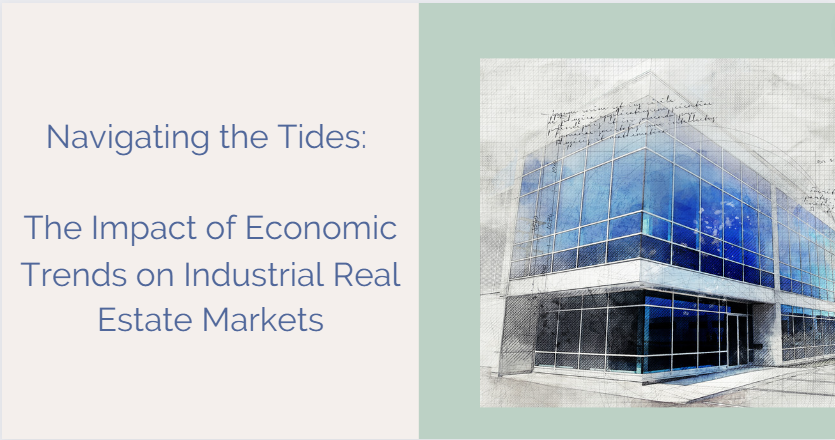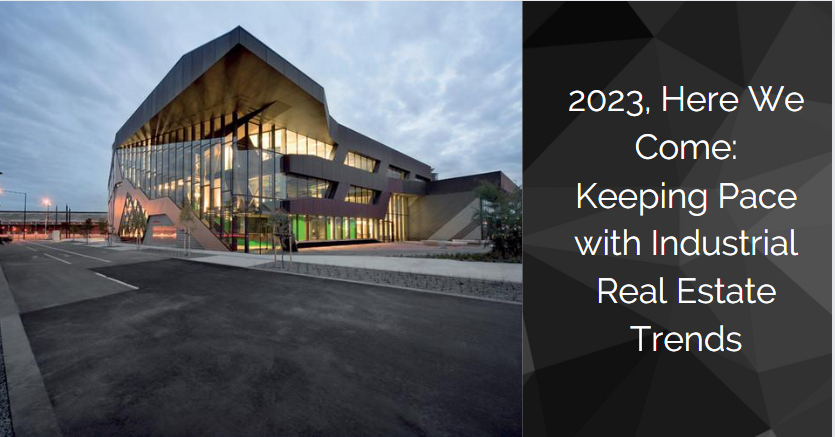Commercial real estate is inextricably linked with the broader economy, reflecting the ebb and flow of macroeconomic trends. Today, we delve deep into how economic factors influence one particular CRE property type - the industrial real estate market.
The industrial real estate market encompasses properties designed for manufacturing, production, storage, and distribution - think warehouses, distribution centers, and factories. Its close ties with the economy, specifically sectors such as manufacturing, retail, and trade, make it susceptible to variations in economic indicators.
Let's start with GDP growth. As the primary barometer of economic health, GDP trends can be mirrored in the industrial real estate market. Robust GDP growth often indicates increased manufacturing and consumption, directly spurring demand for industrial spaces such as warehouses and distribution centers. Conversely, a downturn in GDP can lead to reduced demand, affecting occupancy rates and rental prices in the sector.
Next up is trade policies. Policies promoting international trade can foster the industrial real estate market. More trade implies more goods being transported and stored, thus intensifying the demand for industrial spaces. However, restrictive trade policies, tariffs, and global trade tensions can have an adverse impact, causing uncertainties that could disrupt logistics and dampen the demand for industrial real estate.
Then there's the consumer sentiment. The ever-changing tastes and habits of consumers are key indicators of retail performance. A confident consumer leads to increased retail sales, which in turn, boosts demand for warehouse and distribution spaces. Take the ongoing e-commerce boom; the surge in online shopping has led to a corresponding surge in demand for warehouse and fulfillment centers.
Unemployment rates also play a significant role. Higher unemployment can result in decreased consumer spending, reducing the need for manufacturing and consequently, for industrial spaces. On the other hand, a thriving job market can lead to increased consumer spending and therefore, demand for industrial real estate.
Lastly, let's not forget about technological advancements. The growth of automation, artificial intelligence, and other technological innovations is reshaping the industrial real estate market. Properties equipped with high-tech features can command higher rental rates and are more likely to attract and retain tenants in this evolving landscape.
The influence of economic trends on the industrial real estate market is clear. As an investor in industrial real estate it is vital to remain in tune of these indicators and trends to make informed, strategic decisions. As the economic winds shift, so too will the opportunities in the industrial real estate landscape, but by keeping a pulse on the economic trends and adapting accordingly, you can navigate these waters successfully.
Remember, the world of industrial real estate is not just about buildings and land; it's also about understanding and capitalizing on the subtle yet powerful economic undercurrents that shape its direction.
2023, Here We Come: Keeping Pace with Industrial Real Estate Trends
Observing the ever-evolving industrial real estate world never fails to surprise. This fluctuating landscape requires us as a team to constantly adapt, learn, and innovate. Let's look at key trends projected to mold the industry's coming future.
The eCommerce Juggernaut: It's not breaking news when we say that eCommerce is big—incredibly big. And it's not stopping. As a team working in the trenches of industrial real estate, we see the ripple effects every day, with an insatiable demand for warehouses and distribution centers. The need for these facilities near urban areas is fueling the growth of last-mile logistics. Looking ahead to 2023, we're excited to see how we can continue to innovate and optimize these crucial spaces amidst dwindling supply.
Rise of the Robots: When our journey in CRE started, a 'high-tech' warehouse had a forklift and a good inventory system. Fast-forward to now, and we've got robotics, AI, and IoT transforming the landscape. We won't claim to be tech experts, but even we can see that this trend is only going to accelerate in 2023. As these technologies continue to develop at a rapid pace, we’re anticipating even more automation and the use of advanced tech in industrial real estate.
The Beauty of Adaptive Reuse: Here's a trend we passionately support—taking old, underutilized industrial buildings and breathing new life into them. We've been impressed with the surge in these adaptive reuse projects lately. The challenge is real (we speak from experience), but the potential rewards of these unique, mixed-use spaces are huge. Keep an eye on this space, especially with the shrinking supply of infill industrial space.
Going Green: It's a challenge we all face. How do we keep creating profitable projects and focus on growth while also caring for the environment? More and more, we're seeing a push for sustainability within our sector. We’re proud to be part of that movement. Solar power, energy efficiency, and eco-friendly practices are already changing how we operate. And as we roll into 2023, this focus on sustainability will only become more important.
So, there you have it. A glimpse into the trends shaping industrial real estate's future. We won't pretend to have all the answers—this industry is nothing if not unpredictable. But by keeping these trends in sight, we believe we can navigate the roller coaster together.
Remember, it’s not just about following the trends, it's about understanding them and using that knowledge to make smart, informed decisions. As always, we encourage you to question, learn, and keep pushing forward!


